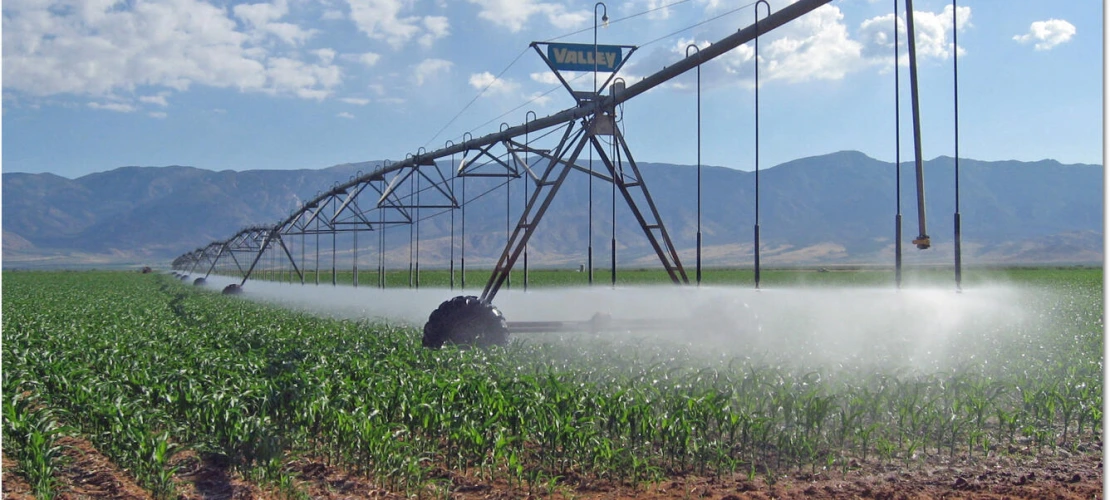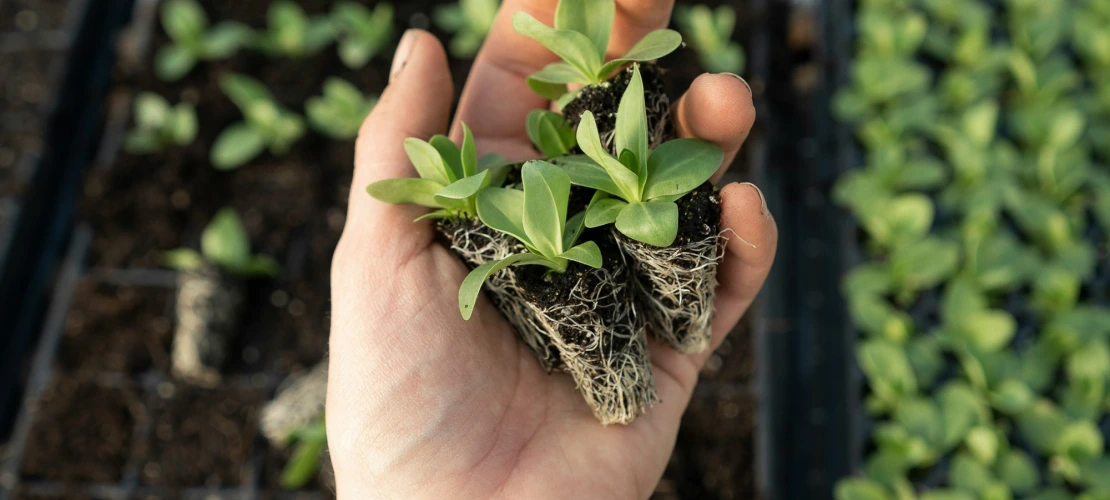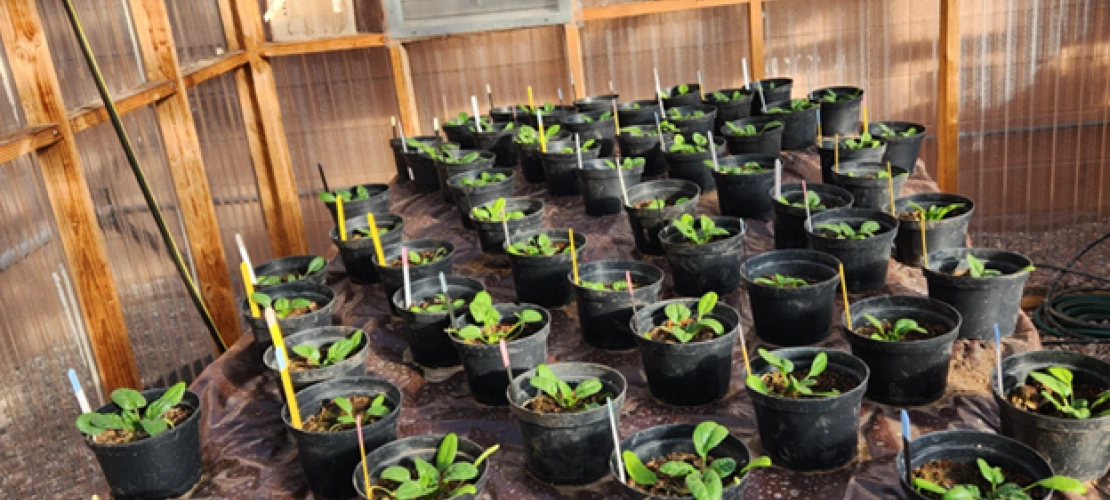Do irrigation disinfectants impact crop yields & soil health?
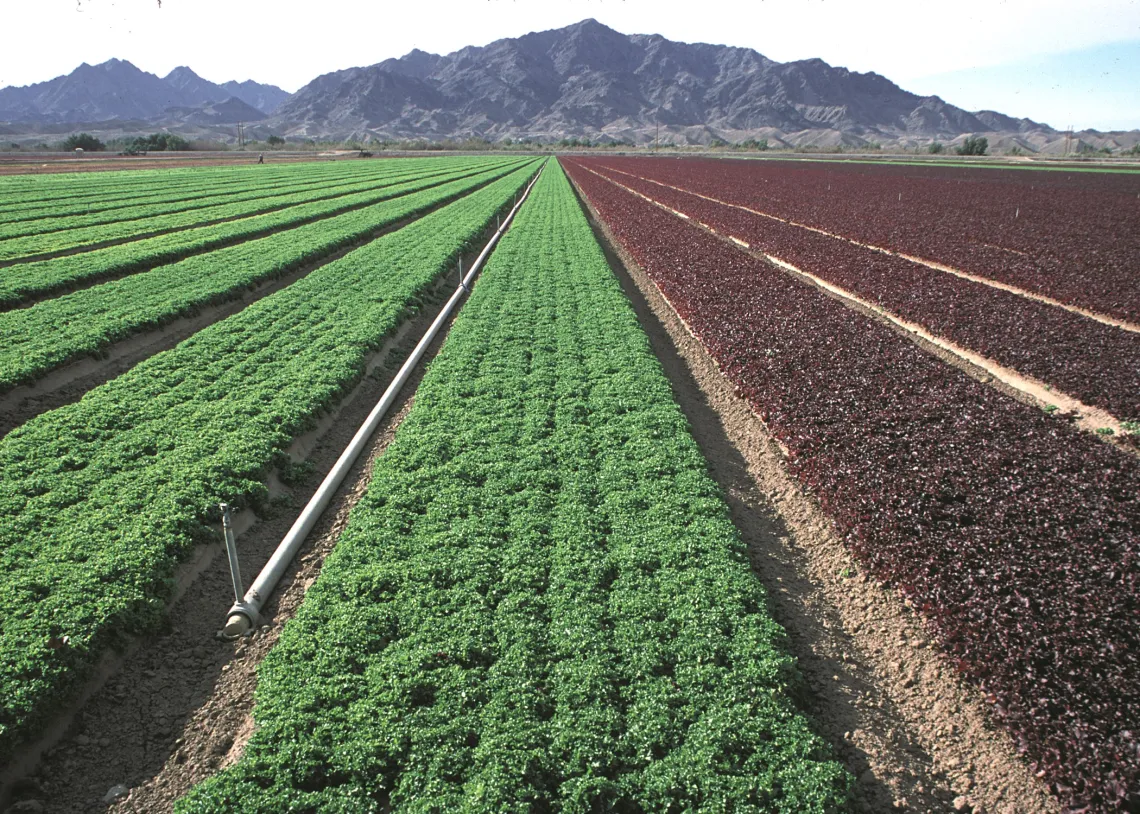
Photo courtesy of USDA Natural Resources Conservation Service.
Irrigation water has been found to be a source of pathogens with resulting concerns for food safety (e.g., E. coli outbreaks). To reduce the probability of contamination and foodborne illnesses, farmers have recently begun to disinfect irrigation water prior to crop harvest. Two disinfectants have been especially recommended for disinfection of irrigation waters: chlorine and peracetic acid (a.k.a. peroxyacetic acid or PAA). PAA has an advantage over chlorine in that it degrades into harmless substances rather than building up salts in the soil; it has thus gained increased interest for agricultural use in recent years.
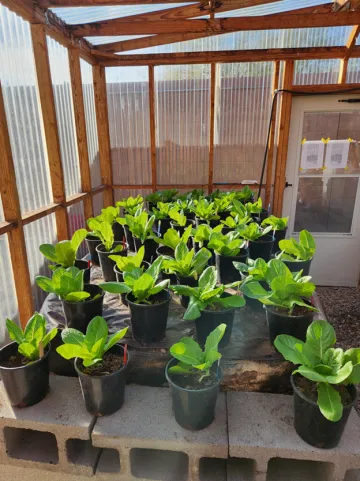
Lettuce plants in the WEST greenhouse.
Kelly Bright
In a previous study at WEST, results indicated that PAA may, in fact, have other advantages over chlorine as a disinfectant for irrigation. For example, in a greenhouse study utilizing sub-surface drip irrigation and romaine lettuce, crop yield was greater when PAA water or control water (no disinfectant) was used as compared to chlorinated water. Biofilm growth was also better controlled in drip lines utilizing PAA water as compared to chlorine water (or control water). At the doses studied, neither disinfectant impacted microbial soil health when measured by adenosine triphosphate (ATP).
Following previous work, WEST Center researchers Drs. Kelly Bright and Chuck Gerba designed a second study to assess how different doses of the two disinfectants impact disinfection, crop yield, and soil health. The study is ongoing and includes two phases:
- The first phase of the study investigates the doses of each disinfectant needed to kill generic E. coli (one Arizona irrigation water isolate), pathogenic E. coli O157:H7 (strain H1730, human isolate from a lettuce outbreak), and two strains of Salmonella. Experiments are being conducted in the WEST Center laboratory, and a variety of water qualities – typical of irrigation waters in Arizona – are characterized and included.
- The second phase of the study uses the WEST Center greenhouse. Romaine lettuce and spinach will be grown in the greenhouse using surface irrigation with water containing chlorine, PAA, and no disinfectant (control) to better understand the various treatments’ impact on crop yield and soil health.
The one-year study at WEST Center is funded by the Arizona Department of Agriculture (AZDA). Results will provide guidance on doses needed to target pathogens of concern given different water quality conditions representative of irrigation waters used in Arizona. It will also better define impacts on plant yield and soil health. WEST researchers will create an extension bulletin to disseminate findings among the agricultural community.


